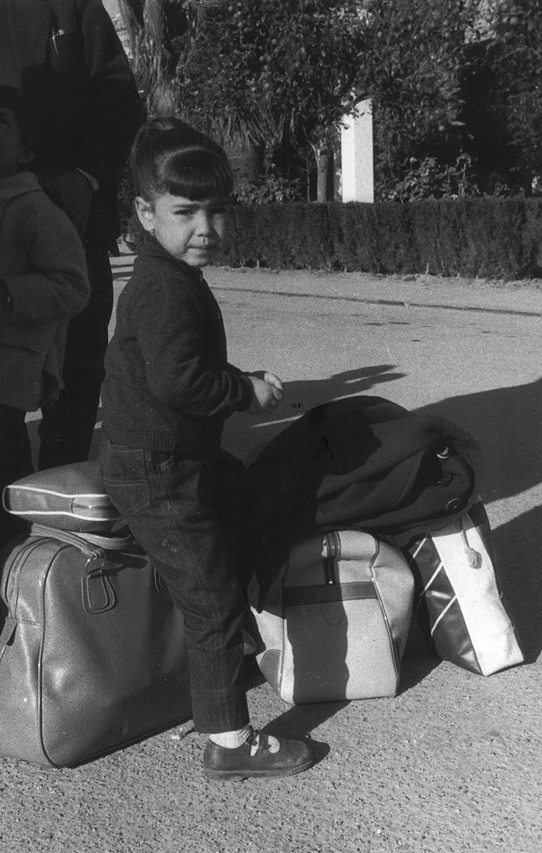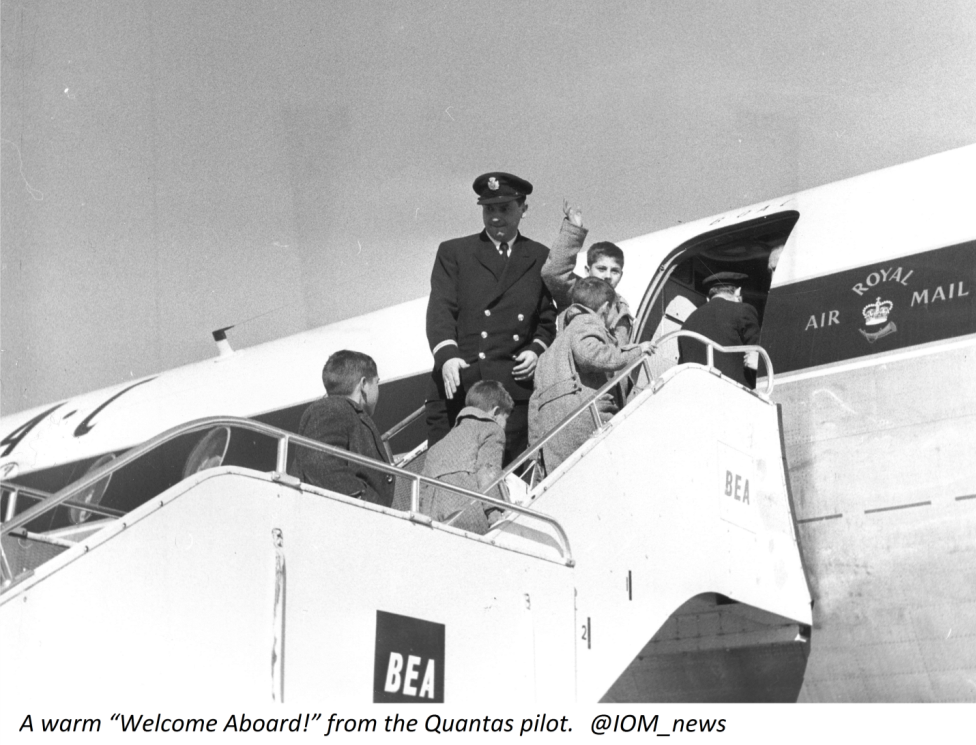
By Ignatius Rautenbach
The little Spanish girl (above) looks out anxiously from the sepia-tinted photograph from 54 years ago. She stands over her family’s few items of luggage, as she awaits the Qantas Super Constellation aircraft that will fly her and her family to a new life in Australia.
IOM archives depict stories of hope amidst the despair brought about by the migration and displacement of an unprecedented number of people around the world as a result of the Second World War.
Displacement within Europe alone was estimated to be at least 11 million, including prisoners of war and those living in states living in newly annexed or occupied states.
There are large numbers of migrants on the move in Europe again today. This time they are fleeing towards Europe, the majority of them entitled to refugee status under the 1951 UNHCR Convention.
Tragically they do not receive the sort of warm sendoff or welcome that many Europeans got when they were fleeing poverty and oppression to go to Australia, as well as North and South America. Look at this photo of the kindly pilot welcoming his migrant charges aboard the jetliner at Madrid Airport in 1961.

Originally named the ‘Provisional Intergovernmental Committee for the Movement of Migrants from Europe’ (PICMME), IOM was born in 1951 out of this chaos in Western Europe.
It was tasked with conducting the orderly migration of displaced persons and refugees, including those living under Generalissimo Franco’s brutal rule. So whatever the motivation of the migrants, whether economic or political, IOM was to be responsible for their relocation.
Today, IOM is doing much the same for migrants (most of them refugees) experiencing devastation similar to the one Europeans did in the 1950s.

Absent a coherent migration process to Europe, those fleeing violence and oppression, as well as those fleeing poverty and the impact of climate change on their livelihoods often feel they have no choice to but to take the smugglers route. They are left on their own, and must scramble to pack, taking as much as they can carry and leaving everything else behind, potentially risking their lives just to reach a country where they may find requests for asylum rejected outright.
In 1961, when these photos were taken, these migrants were able to show up at the airport in their Sunday best, safe in the knowledge that they would have a seat on a plane to take them to their new home, and would be warmly welcomed in the their country.
How times have changed.